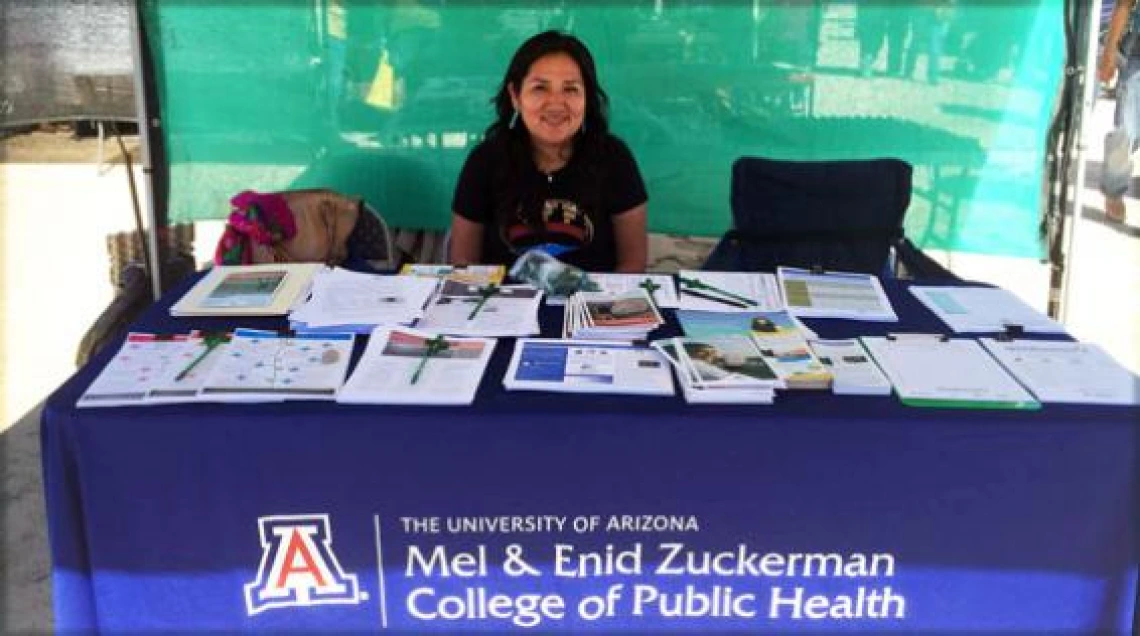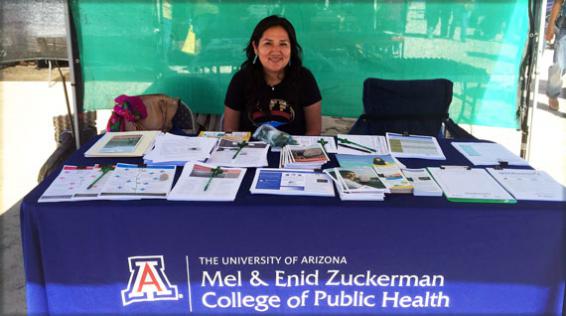UA SRP Provides Informational Materials at the 2016 Northern Navajo Nation Fair


On October 1, 2016, the University of Arizona Superfund Research Program (UA SRP) partnered with several student volunteers to provide an informational table at the Northern Navajo Nation Fair in Shiprock, New Mexico. This effort was led by Gold King Mine Spill Project (Tó’Łítso project) investigator Dr. Jani Ingram from Northern Arizona University (NAU). The Northern Navajo Nation Fair is the oldest and most traditional of all the fairs held in Navajo Nation. It occurs every fall and people from the Four Corners area come together to celebrate their crop harvest and participate in community festivities.
The Tó’Łítso project volunteers that hosted the table included Marsha Bitsui (graduate student at NAU Department of Chemistry and Biochemistry in); Heidi Dugi (graduate student at the University of Arizona (UA) Mel and Enid Zuckerman College of Public Health) Corinna Sabaque (graduate student at the UA Mel and Enid Zuckerman College of Public Health); Aaron D. Thomas (UA undergraduate Tó’Łítso project intern); Norvina Charleston (Navajo Technical University undergraduate Tó’Łítso project intern) Teresa Montoya (To’ Bee Nihi Dziil), Matthew Thompson (To’ Bee Nihi Dziil), and Janene Yazzie (To’ Bee Nihi Dziil); and Brandon Francis (New Mexico State University soil scientist).
The team distributed brochures describing the Tó’Łítso project, the UA SRP supported Gardenroots: A Citizen Science Garden Project, as well as UA SRP fact sheets on the spill and metal exposures. Various people stopped by at the booth and many provided contact information in order for them to receive future information on the Tó’Łítso or Gardenroots projects. The Northern Navajo Nation Fair was heavily attended and as part of the Tó’Łítso project, samples of corn grown in agricultural fields along the San Juan River were purchased from community members. These samples will be analyzed for lead and arsenic. Community members that provided the samples will receive the results of the crop analysis. Overall, the event was well received by the community and many offered their encouragement for the project. “I was pleased to see all the elders, parents, and children taking part in each activity with smiling faces. Each family looks forward to this time of the year because it is a time to celebrate our tradition and culture by coming back together, sharing stories, and eating good food,” said Dugi reflecting about her experience. Sabaque added, “They were thankful for what we were doing this for the community and took the pamphlets and fliers so they could learn more about our study and the spill.”

